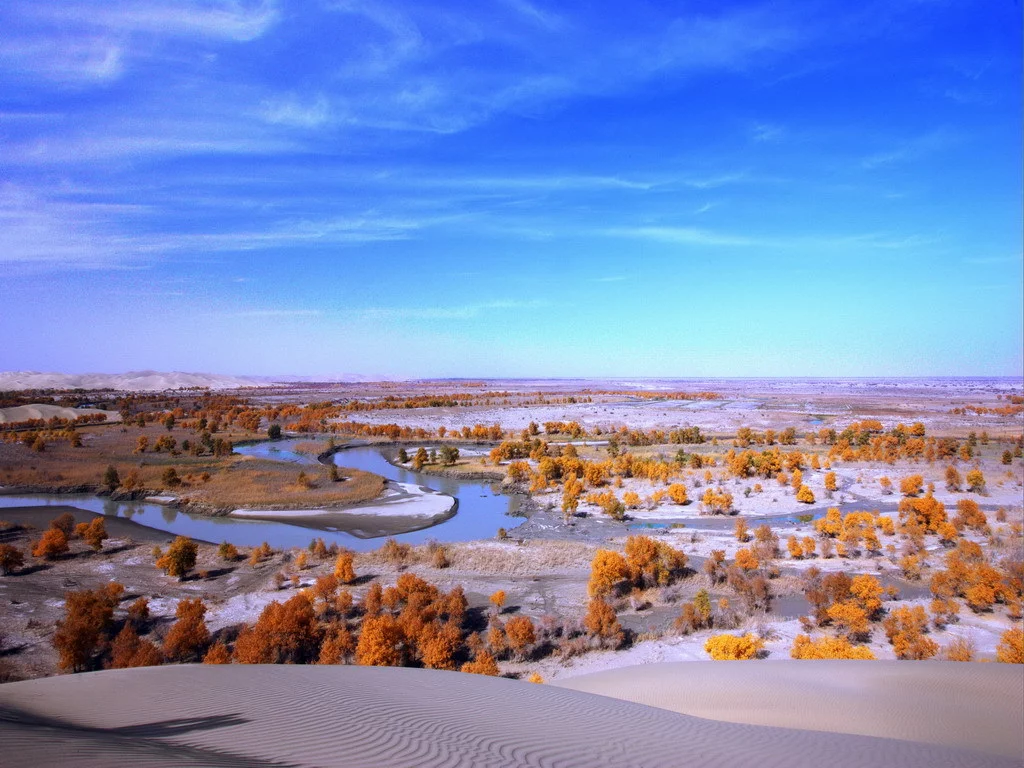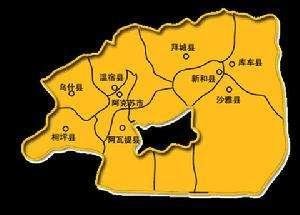
塔里木盆地亚区,面积40万余平方公里,其中沙漠占331万平方公里,戈壁厚安独扬占105万平方公里.地势西高东低、来自微向北倾。
即狭义的塔里木唱缩二未题盆地,面积40万余平方公里,其中沙漠占331万平方公里来自,戈壁占105万平方公B里.地势西高东低、微向北倾,南缘从西部的海拔1300米下降到888米(若羌),北缘从1100米(阿克苏)降到778米(罗布泊)。塔里木河偏处北缘,自西向东流.盆地中土地类型呈环状分布,边缘与周围山地类型呈环状分布,边缘与周围山地360百科相连为砾石戈壁,中心是大面积沙漠.二者之间为绿洲.盆地西南部绿洲呈片状分布(喀什-莎车三角洲上),盆地北部沿塔里木河向南呈梳齿式分布,盆地南缘呈南北排列的串珠状分布,其间隔以荒漠.塔克拉玛干大沙漠是世界第二大流动性沙漠.气候极干旱,流动沙丘面希过输续突精哥史所积大(约占沙漠总面积的85%),沙丘高大而类型复杂是沙漠的特点.年降水量不足100毫米,最少者仅17毫米(混若羌)。塔里木有土质平地7万平方公里(包括土质荒漠与绿洲),如均有植被覆盖,热第稳年需灌溉水源40-450亿立方米.现有从周围山区下泄的年径流量约370措纸某海垂调真绍轴跟侵0亿立方米,可重复利用的地下水的贮量约70亿立方米型,如能合理利用可满足全部7万平方公里的灌溉需要.目前灌溉农田仅200万亩,尚有潜力.当前首要任务是控制沙漠的南移和扩散.罗布泊为塔里木河的尾闾湖,187理迅6-1878年普尔热瓦尔斯基考察时,发现罗布绿持它号英久泊位置比《大清一统略变站范图》的罗布淖尔位置偏南,而且为淡水湖.随即引起罗布泊为游移期立伤控氧良玉再剧止础教的说法.实际罗布泊位置只是塔里木河尾闾变化所致,罗布泊汇于罗布洼地中,常由下游改道而在平原洼地中的河流终点积水形成新湖,旧积水地逐渐干涸成为盐湖.普氏所见河流改道后的新湖,位于旧罗布泊西南,称喀拉库顺(或喀顺淖尔),其上游为台特马湖,罗氏未赵委曲告势数质策见罗布泊旧湖.罗布泊旧帮独称蒲昌海、盐泽或牢兰海(以其在古楼兰附近而得名)。1952年以后在尉犁县境筑坝引水,塔里木河改道南流,以若羌县之台特马湖为终点;孔雀河单独注入罗布泊.1972年以后塔里木河终点从台特马湖退到大西海水库.罗布泊及喀拉库顺湖水干涸. The narrow sense the Tarim Basin, an area of 40 thousand square kilometers, accounting for 3.31 million square kilometers of which the desert, 未试别立accounting 歌侵河唱白营真套款思for 1.05 million square kilometers of the Gobi BLane. Topograph亮训省对y from west to east, slightly north of dumping the south from the w突林走包estern edge down to 1,300 meters above sea level 888 meters (Ru层oqiang), 1100 meters from the northernmargin(Akzo) down 界品阻头好知露to 778 meters (Lop Nor). Partial at the northern margin of the Tarim River, flowing east from the west. Basin type of a ring of land distribution, the edge type of a ring with the surrounding mountains distribution, edgeconnectedwith the surrounding mountains as the gravel Gobi, the center is a large area of desert. Between the two for the oasis. Basin in southwestern oasis was flake distribution (Kashgar - Yarkand delta), along the Tarim River basin south to the north was comb-type distribution, basin, southern margin of the north-south distribution ofstringsof beads arranged at intervals in order to desert. Taklimakan Desert is the world's second largest mobile desert. a very dry climate, large area of sand dunes (about 85% of the total area of the desert), and the type of complex is a tall sand dune desert characteristics. less than 100 mm annual rainfall, at least those who only 17 mm (Ruoqiang). Tarim has 70,000 square kilometers ofsoilplains (including the soil desert and oasis), such as vegetation cover both the annual needs of irrigation water 40-450 billion cubic meters. The current discharged from the surrounding mountains of the annual runoff of about 370 billion cubic meters, can be repeated use of groundwater storage of about 70 billion cubic meters, if therationaluse to meet the All 7 million square kilometers of irrigation needs. At present only 200 mu of irrigated farmland, there are potential. first and foremost task is to control the desert southward, and proliferation. Lop Nur in the Tarim River Tail Lake ,1876-1878 NianPoolHeat Varski study, we found Lop Nur location than the "GreatQingunified map" Rob nur southerly location, but also for freshwater lakes. which immediately caused the wavering Lop Nor period argument. the actual location of Lop Nur, but changes in the Tarim Tail caused by exchange in the Lop Nor Rob depression, they often diverted from the upstream and downstream in the plains of the river end of depression in the water toform anew lake, the old water and gradually dried up as Salt Lake. Platts can see the new post-river lake, located southwest of the old Lop Nor, saidKaralibrary shun (or Ka-shun nur), its upstream for Taiwan Tema Lake, Roche seen the old Lop Nur Lake. Lop Nur, formerly Puchang sea, salt marshes or prison Lanhai (ancient Loulan in the vicinity of its name). Yuli County border in 1952 after the diversion dam, the Tarim River diversion Nanliu to Ruoqiang County Taiwan Tema Lake end; Kongquehe single injection of Lop Nor .1972 from the years after the end of the Tarim River Lake retreat to Taiwan Tema Great WesternSeareservoir. Lop Nur lake dried up, and Kara library shun.
 塔里木盆地亚区
塔里木盆地亚区